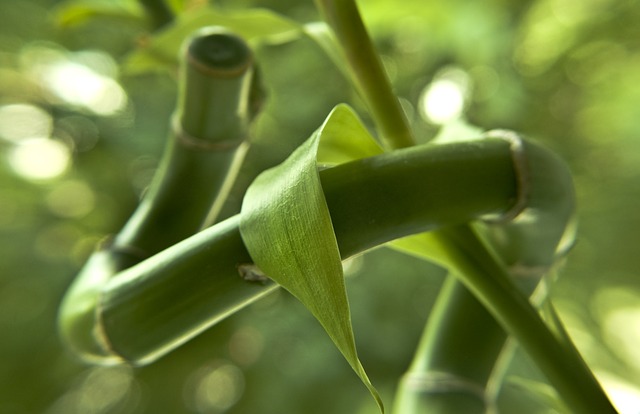Influence of solvent type on microwave-assisted liquefaction of bamboo

Microwave-assisted liquefaction of bamboo in glycerol, polyethylene glycerol (PEG), methanol, ethanol, and water were comparatively investigated by evaluating the temperature-dependence for conversion and liquefied residue characteristics. The conversion for the liquefaction in methanol, ethanol, and water increased with an increase in reaction temperature, while that for liquefaction in glycerol and PEG was converse. The results of Fourier transform-infrared spectra for the liquefied residues revealed that cellulose was the main resistance to bamboo liquefaction in methanol, ethanol, and water. Glycerol could be selected as a commendable liquefacient for the solvolysis of bamboo components at low temperature using microwave energy. Moreover, liquefaction behaviors in glycerol and methanol under different temperatures were also distinguished by scanning electron microscopy images.
Bamboo has become one of the most important non-timber forest products in China and other Asian countries. This is primarily due to its rapid growth rate, availability, renewable nature, high productivity, short maturity cycle, and multiple uses. Currently, bamboo has been used in the preparation of high-value added products, such as panel, parquets, furniture, and structural composites. However, in the manufacturing of bamboo-based materials, the epidermis and wax layer of bamboo are usually split off. This is because of the poor wettability or penetration of these portions for subsequent treatments, for example, coating and preservative treatments, etc. Thus, large quantities of bamboo processing residues, such as epidermis, are cast aside as waste.
Recent achievements in techniques for converting woody materials into value-added liquid products under mild conditions using organic solvent and an acid catalyst have stimulated certain studies focused on evaluating bamboo as a raw material for manufacturing bio-products. Several studies have been conducted to formulate liquefied bamboo for bio-polyols and polyurethane foams (Yip et al. 2009; Zhang et al. 2013; Liu et al. 2008; Gao et al. 2010). Although pilot-scale evaluation of liquefied bamboo as chemical feedstocks for the preparation of polyurethane foams have shown encouraging results, an economically viable bamboo waste conversion technology is yet to be realized because of the high cost of the liquefaction process. Alcohols have been proven to be effective solvents for liquefaction of lignocellulosic biomass (Xu et al. 2013; Toor et al. 2013). The benefit from using alcohols in liquefaction is that they can be easily recovered after liquefaction.
Microwave energy has recently been applied in the liquefaction of lignocellulosic biomass (Pan et al. 2012; Li et al. 2013; Xiao et al. 2013). In a microwave heating system, microwave energy penetrates and produces a volumetrically distributed heat source; heat is generated throughout the material and leads to faster heating rate and improved kinetics as compared to conventional heating. However, microwave dielectric heating is based on the ability of a specific reagent or substance to absorb such radiation and convert it into heat at a given frequency (Cinta et al. 2014). Thus, solvents with different specificities that will be applied in a microwave-assisted liquefaction system may have an influence on the liquefaction behavior of biomass. In this study, liquefaction of bamboo with five different solvents (glycerol, PEG, methanol, alcohol, and water) using microwave energy was systematically investigated. The chemical structure and the surface morphology of the liquefied residues from different reaction conditions were comparatively analyzed. The specific objective of the study is to provide a primary understanding of the influence of solvents on the extent of liquefaction with microwave as heating energy.
To read more please visit our publication: Influence of solvent type on microwave-assisted liquefaction of bamboo
Meet the Author
Dr. Todd Shupe is the President of Wood Science Consulting, LLC. He is a well-recognized expert on wood forensics, wood preservation, wood decay and degradation, and wood species identification. He has a broad background in new product development, quality management, and marketing and sales in both the public and private sectors. For more information please visit DrToddShupe.com.
We welcome your comments below.
Thank you for visiting. We trust that you have enjoyed reading our articles.
Liked this post? Read more below or search for more topics . . .

